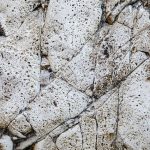You’ll want geotextile fabric under your pavers if your soil is loose, sandy, clay-heavy, or prone to shifting. It stabilizes the ground, prevents weeds from popping up, and stops soil from mixing with the base material, keeping your pavers level and lasting longer. If your base is solid and well-compacted, you might skip it. Keep going to discover more about when it helps and how to install it properly.
Table of Contents
Key Takeaways
- Geotextile fabric stabilizes soil and prevents shifting, ideal for loose, sandy, or clay-heavy soils under pavers.
- It acts as a barrier to stop soil mixing with base material, reducing erosion and maintaining paver alignment.
- Use geotextile to prevent weed growth and improve drainage beneath pavers, especially in areas prone to moisture.
- Skip geotextile if the base is solid, well-compacted, or drains well, such as concrete or compacted gravel bases.
- Despite upfront costs, geotextile extends paver lifespan and reduces long-term maintenance and repair expenses.
What Is Geotextile Fabric and How Does It Work
Geotextile fabric acts as a barrier and stabilizer beneath your pavers, preventing soil from mixing with the base material. It’s typically made from synthetic fibers woven or non-woven into a durable sheet.
When you lay it down, it separates layers of soil and aggregate, ensuring the base remains solid and uncompacted over time. The fabric also allows water to pass through, reducing drainage issues and preventing erosion under your pavers.
Benefits of Using Geotextile Under Pavers
Using geotextile fabric under your pavers helps stabilize the soil, preventing shifting and sinking over time.
It also acts as a barrier to keep weeds from growing up between the pavers, saving you maintenance headaches.
These benefits make your paved area last longer and look cleaner with less effort.
Soil Stabilization Advantages
When you lay pavers on loose or uneven soil, you risk shifting and sinking over time.
Using geotextile fabric beneath your pavers stabilizes the soil, creating a firm, even base. This helps distribute weight evenly, preventing movement and maintaining your paver surface’s integrity. You’ll save time and money on repairs and avoid uneven surfaces that can cause tripping hazards.
Here are key soil stabilization advantages when using geotextile under pavers:
- Reinforces weak or sandy soils
- Prevents mixing of subsoil and base materials
- Enhances load-bearing capacity
- Reduces soil erosion under the pavers
- Maintains long-term paver alignment and levelness
Weed Prevention Benefits
Besides stabilizing soil, the fabric also acts as a barrier to weeds, stopping them from growing up through your pavers.
When you lay geotextile under your pavers, it blocks sunlight and prevents weed seeds from taking root. This means you won’t have to spend time pulling weeds or applying herbicides later on.
The fabric’s permeability allows water to drain while keeping soil and organic debris from mixing with the base layer, reducing the chances of weed growth.
By using geotextile, you maintain a cleaner, more attractive surface and protect your investment in landscaping.
If you want a low-maintenance patio or walkway, incorporating this barrier will save you effort and keep unwanted weeds at bay for years to come.
Types of Geotextile Fabrics Suitable for Paver Projects
You’ll find woven geotextiles offer great strength and stability for paver projects, while nonwoven types excel at drainage and filtration.
It’s important to pick a fabric that matches the durability needs of your specific installation. Knowing these differences helps you choose the right geotextile to protect and support your pavers effectively.
Woven Geotextile Benefits
Woven geotextiles offer excellent strength and durability, making them ideal for paver projects. When you choose woven fabrics, you get a material that resists tearing and provides stable support under heavy loads. This helps prevent shifting and sinking of your pavers over time.
Plus, woven geotextiles allow water to pass through while keeping soil and sand in place, enhancing drainage and reducing erosion.
Here’s what you gain with woven geotextiles under your pavers:
- Superior tensile strength for heavy traffic areas
- Effective soil stabilization and separation
- Enhanced drainage without losing base material
- Resistance to punctures and tears
- Longevity that supports long-term project durability
Using woven geotextiles guarantees your paver installation stays solid and lasts longer.
Nonwoven Geotextile Uses
While woven geotextiles excel at providing strength and stability, nonwoven geotextiles serve different but equally important roles in paver projects.
When you use nonwoven fabrics, you primarily benefit from their excellent drainage and filtration capabilities. These fabrics allow water to pass through while preventing soil and fine particles from migrating upward and mixing with your base material. This helps maintain the integrity of your paver base, reducing the risk of settling or shifting over time.
Nonwoven geotextiles are also great for cushioning and protecting underlying layers from damage during installation. If your project involves areas prone to water accumulation or weak soils, nonwoven geotextiles can be a smart choice to enhance drainage and longevity without compromising structural support.
Choosing Fabric Durability
Durability plays an essential role when selecting geotextile fabrics for your paver project. You want a fabric that stands up to soil pressure, resists tearing, and lasts through weather changes. The right durability guarantees your pavers stay stable and prevents weeds from growing through.
Consider these fabric types:
- Woven Geotextiles: Strong and tear-resistant, ideal for heavy loads.
- Nonwoven Geotextiles: Great for filtration and drainage but less durable under heavy pressure.
- Polypropylene Fabrics: Resistant to chemicals and UV, perfect for outdoor use.
- Polyester Fabrics: Good strength and durability with excellent elongation.
- Needle-Punched Fabrics: Tough and durable, used for separation and reinforcement.
Choosing the right fabric durability will save you time and money in maintenance.
Soil Conditions That Require Geotextile Installation
If your soil is loose, sandy, or prone to shifting, you’ll benefit from installing geotextile under your pavers. These soil conditions can cause instability, leading to uneven surfaces and paver movement.
Geotextile fabric stabilizes the ground by separating the paver base from the soil, preventing mixing and maintaining structural integrity. Clay-heavy or wet soils that retain moisture also call for geotextile use, as they tend to expand and contract, which can damage your paving.
Additionally, if your area experiences frequent freeze-thaw cycles, geotextile helps reduce soil displacement. By evaluating your soil type and its behavior, you guarantee your pavers remain level and secure over time.
Installing geotextile in these conditions is a smart investment in durability.
How Geotextile Prevents Weed Growth and Soil Erosion
Because geotextile fabric acts as a barrier, it effectively stops weeds from growing up through your pavers, saving you time and effort on maintenance.
This fabric blocks sunlight and limits weed seed germination, preventing unwanted plants from breaking through. Additionally, it stabilizes the soil beneath your pavers, reducing erosion caused by water runoff or foot traffic.
By holding soil in place, geotextile maintains a solid foundation for your paved surface, extending its lifespan.
Here’s how geotextile helps:
- Blocks sunlight to inhibit weed growth
- Prevents weed seeds from reaching soil
- Stabilizes soil structure under pavers
- Reduces soil erosion from water and movement
- Maintains a firm, even base for pavers
Using geotextile keeps your outdoor space cleaner and more durable.
When You Might Skip Using Geotextile Under Pavers
While geotextile offers clear benefits in preventing weeds and stabilizing soil, there are situations where you mightn’t need to use it under your pavers.
Geotextile can prevent weeds and stabilize soil, but it’s not always necessary beneath pavers.
If your project involves a solid, well-compacted base like concrete or asphalt, adding geotextile may be unnecessary since these surfaces already prevent weed growth and provide stability.
Also, if you’re installing pavers over a compacted gravel base that drains well and doesn’t shift easily, you might skip the fabric.
In areas with minimal weed pressure or where you plan to use polymeric sand between pavers, the geotextile’s weed barrier role might be less critical.
However, skipping it depends on your soil conditions and long-term maintenance goals, so weigh these factors carefully before deciding.
Step-by-Step Guide to Installing Geotextile Fabric
Installing geotextile fabric involves a few straightforward steps that guarantee your pavers stay stable and weed-free for years.
First, clear and level the area where you’ll lay the pavers. Next, spread a layer of crushed stone or sand to create a smooth base.
Then, roll out the geotextile fabric over the base, making sure it overlaps at the seams by at least 6 inches. Secure the fabric with landscape staples or pins to keep it from shifting.
Finally, add another layer of sand or stone on top before placing your pavers.
- Clear and level the ground
- Lay a base layer of crushed stone or sand
- Roll out and overlap geotextile fabric
- Secure fabric with landscape staples
- Add a top layer before setting pavers
Cost Considerations and Long-Term Value of Geotextile Use
Once you’ve installed geotextile fabric correctly, it’s important to contemplate how this choice impacts your budget and the long-term performance of your paver project.
While geotextile fabric adds an upfront cost, it often saves you money over time by preventing soil erosion, weed growth, and base material mixing. These issues can lead to costly repairs or premature paver failure.
By stabilizing the base, the fabric helps maintain a level surface, reducing the need for frequent maintenance.
So, although it might feel like an extra expense initially, using geotextile fabric offers significant value by extending the lifespan of your pavers and minimizing repair costs.
In the long run, investing in this fabric proves more economical than facing repeated fixes and uneven surfaces.
Frequently Asked Questions
Can Geotextile Fabric Be Reused After Removing Pavers?
You can reuse geotextile fabric if it’s in good condition after removing pavers. Just check for tears or heavy dirt buildup; damaged fabric won’t perform well, so replacing it might be a better choice for long-term stability.
How Does Weather Affect Geotextile Fabric Performance?
Like a shield in a storm, geotextile fabric resists weather’s wear. You’ll find extreme heat can weaken it, while frost might cause brittleness. Moisture’s constant dance can affect its durability over time.
Are There Eco-Friendly Alternatives to Traditional Geotextile Fabrics?
You can choose eco-friendly alternatives like biodegradable jute or coir fabrics. These natural materials break down over time, reducing environmental impact while still providing soil stabilization and erosion control for your landscaping projects.
Can Pets Damage Geotextile Fabric Under Pavers?
Like a mischievous tornado, pets can scratch and dig, potentially damaging geotextile fabric under pavers. You’ll want to monitor their behavior and choose durable fabric to keep your pavers stable and intact.
Does Geotextile Fabric Affect Drainage Around Pavers?
Geotextile fabric actually helps improve drainage around pavers by preventing soil from mixing with the base material. You’ll keep water flowing properly, reducing pooling and soil erosion, which protects your paver installation long-term.
- How to Clean Suede Fabric Shoes: A Definitive Guide - July 12, 2025
- Everything You Need to Know About Faux Suede Fabric - July 12, 2025
- How to Get Wrinkles Out of Suede Fabric - July 12, 2025







